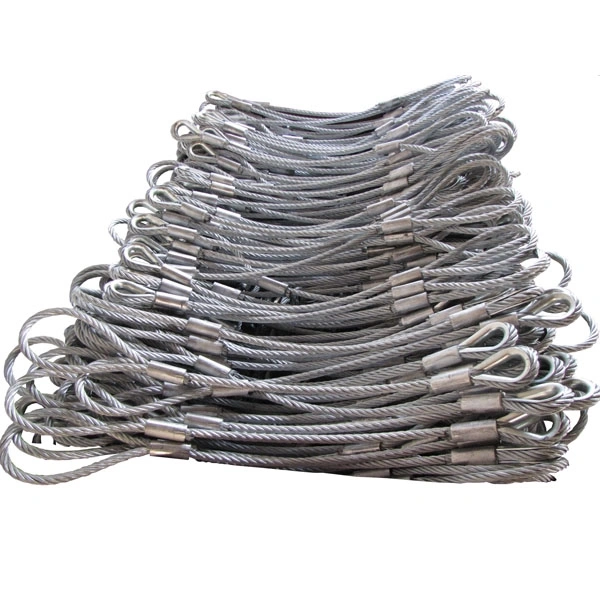Table of contents:
Recognizing Signs of Wear and Damage
Implementing Regular Inspection Protocols
Training Personnel on Proper Sling Usage
Understanding Load Angle Effects on Sling Capacity
Recognizing Signs of Wear and Damage
One crucial aspect of using custom lifting slings safely is being able to identify signs of wear and damage. Over time, even the most heavy-duty wire rope slings can degrade due to regular use or exposure to harsh conditions. Look for visible issues such as frayed wires, broken strands, or corrosion on the sling's surface. If the sling carries an excessive number of kinks, cuts, or flattened areas, it’s a clear sign of concern. Pay attention to the sling's fittings and connections as well; check for cracks, deformations, or signs of looseness. Using a damaged sling, whether it’s a custom wire rope sling or another type of lifting tool, can compromise the safety of everyone involved and jeopardize the success of the operation. Always prioritize identifying wear and tear before continuing with any lifting tasks.
Implementing Regular Inspection Protocols
To maintain safety when using custom lifting slings, putting consistent inspection protocols into place is non-negotiable. Inspections should be conducted before and after every use, with a thorough review of both the sling and associated rigging equipment. During each inspection, ensure that lubrication for the wire sling is sufficient and that there are no visible signs of degradation, such as rust or abrasion. Additionally, schedule in-depth inspections at regular time intervals to ensure no underlying issues go unnoticed. Documenting the findings from every inspection can help track the wear and lifespan of your heavy-duty wire rope slings, allowing for preventive action before issues escalate. Adopting this practice will not only protect your team and equipment but will also ensure regulatory compliance, keeping your operations running efficiently and without interruptions.
Training Personnel on Proper Sling Usage
Even the most advanced custom lifting slings can’t guarantee safety in the hands of untrained personnel. Thorough training programs are essential to ensure everyone involved understands the correct procedures for lifting and handling heavy loads. Workers must be educated on how to attach slings to loads, calculate weight capacities, and ensure proper load balancing throughout the lift. Training should also include information about the specific characteristics and limitations of the slings being used, such as custom wire rope slings or those tagged as wire lifting slings for sale. Additionally, the team should know how to recognize warning signs of overloading or stress on the sling while a lift is in progress. Without proper training, the misuse of equipment can result in accidents, injuries, or even equipment failure, which is why consistent training is a foundational component of lifting sling safety.
Understanding Load Angle Effects on Sling Capacity
Another critical but often overlooked aspect of lifting safety is the effect of load angles on a sling's capacity. Load angles can drastically impact the working load limit (WLL) of a sling, meaning that improperly calculated angles can put undue stress on both the sling and the load. When using custom lifting slings, it is imperative to consider how the angle formed between the sling and the load will affect the overall lifting capacity. A smaller angle increases the tension on the sling, potentially exceeding its capacity, even if the load weight appears suitable. Using lifting equipment, such as heavy-duty wire rope slings, at improper angles increases the risk of failure and potential harm. Proper rigging practices should be emphasized in all lifting operations by calculating angles beforehand and ensuring the sling and all other rigging components are used within their safe limits.
The safe and effective use of custom lifting slings is a responsibility that demands vigilance, proper training, and reliable protocols. Regular inspection, load angle management, and personnel training make up the backbone of safe lifting practices. Whether you’re choosing heavy-duty wire rope slings or shopping for wire lifting slings for sale, ensuring that these steps are followed will lead to safer operations and longer-lasting equipment. Don’t compromise when it comes to safety. Adopt these practices and keep your team secure and productive.

Comments
Post a Comment